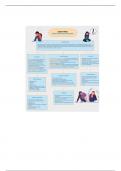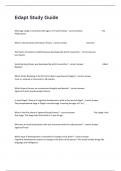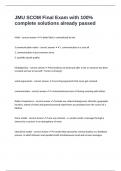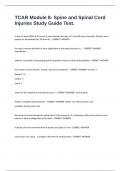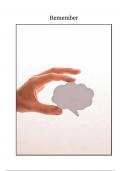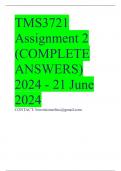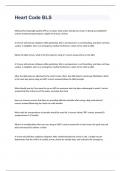Flow/ transfer = a form of linkage between one store/ component and another
that involves movement of energy or mass.
Input = the addition of matter and/or energy into a system.
Store/component = a part of the system where energy/ mass is stored or
transformed.
System = a set of interrelated components working together towards some kind of
process.
Systems can be classified as:
• Isolated systems - these have no interactions with anything outside the system
boundary. There is no input or output of energy or matter.
• Closed systems - these have transfers of energy both into and beyond the
system boundary but not transfer of matter.
• Open systems - these are where matter and energy can be transferred from the
system across the boundary into the surrounding environment.
When there is a balance between the inputs and outputs then the system is said to
be in a state of dynamic equilibrium. This means that the stores stay the same. If
one of the elements of the system changes, for example one of the inputs increases
without any corresponding change in the outputs, then the store changes and the
equilibrium is upset. This is called feedback:
• Positive feedback- where the effects of an action are amplified/ multiplied by
subsequent knock-on or secondary effects.
• Negative feedback- where the effects of an action are nullified by its subsequent
knock-on effects.
,The water cycle
Atmospheric water - water found in the atmosphere; mainly water vapour with
some liquid water (cloud and rain droplets) and ice crystals.
Cryospheric water - the water locked up on the Earth’s surface as ice.
Hydrosphere - a discontinuous layer of water at or near the earth’s surface. It
includes all liquid and frozen surface waters, groundwater held in soil and rock
and atmospheric water vapour.
Oceanic water - the water contained in the Earth’s oceans and seas but not
including such inland seas.
Terrestrial water - this consists of groundwater, soil moisture, lakes, wetlands and
rivers.
There is a fixed amount of water on Earth and in
its atmosphere, so the whole earth can be
thought of as a closed system. Of all the water on
earth, 96.5% is salt water (stored in the oceans),
2.5% is freshwater (69% of this 2.5% is stored
in glaciers and ice caps, 30% of the 2.5% is
stored as groundwater.
Water on or close to the Earth’s surface is called
the hydrosphere. It is estimated to be about
1.338x109km3 and is thought that
approximately 97 percent of this is oceanic
water. Fresh water makes up the remaining 3
percent, and is locked up in land ice, glaciers and
permafrost, groundwater, lakes, soil, wetlands,
rivers, biomass and atmospheric water.
Oceanic water
Oceanic water tastes salty because it contains salts. These salts allow it to stay as
liquid water below 0 degrees.
Cryospheric water
The cryosphere is those portions of the Earth’s surface where water is in solid
form. This includes; sea ice, ice caps, ice sheets, alpine glaciers and permafrost.
, Sea ice - much of the arctic ocean is frozen, the amount of which grows in winter
and shrinks in summer. The same is true of the waters surrounding Antarctica. Sea
ice forms when water in the oceans is cooled to temperatures below freezing. Sea
ice does not raise sea level when it melts, because it forms from ocean water. Ice
shelves are platforms of ice that form where ice sheets and glaciers move out into
the oceans. Ice shelves exist mostly in Antarctica and Greenland, as well as in the
arctic. Icebergs are chunks of ice that break off glaciers and ice shelves and drift in
the oceans. They raise sea level only when they first leave land and push into the
water, but not when they melt in the water.
Ice sheets - an ice sheet is a mass of glacial land ice extending more than 50000km2.
The two major ice sheets on earth today cover most of Greenland and Antarctica.
During the last ice advance, ice sheets also covered much of north America,
northern Europe and Argentina.
The Antarctic and Greenland ice sheets contain more than 99 percent of the
freshwater ice on earth. Ice sheets form in areas where snow falls in winter does
not melt entirely over summer. Over thousands of years, the layers of snow pile up
into thick masses of ice, growing thicker and denser and becomes more
compressed. Ice sheets contain enormous quantities of frozen water. If the
Antarctic ice sheet melted, sea level would rise by about 60m.
Ice caps - are thick layers of ice on land that are smaller than 50000km2. They are
usually found in mountainous areas. Ice caps tend to be dome- shaped and are
centred over the highest point of an upland area.
Alpine glaciers - are thick masses of ice found in deep valleys or in upland hollows.
Most valley glaciers are fed by ice from ice caps or smaller corrie glaciers. Glaciers,
snow and ice cover the nearby land of the Arctic ocean, including a thick sheet of
snow and ice covering Greenland.
Permafrost - is defined as ground that remains at or below 0 degrees for at least
two consecutive years. The thickness of permafrost varies from less than one
metre to more than 1500m. Most of the permafrost existing today formed during
cold glacial periods and has persisted through warmer interglacial periods,
including the Holocene. The permafrost has begun to melt as climate warms. This
melting is releasing large amounts of carbon dioxide and methane, potentially
affection global climates.
Terrestrial water
Terrestrial water falls into four broad classes:
• Surface water
• Groundwater
• Soil water
• Biological water


